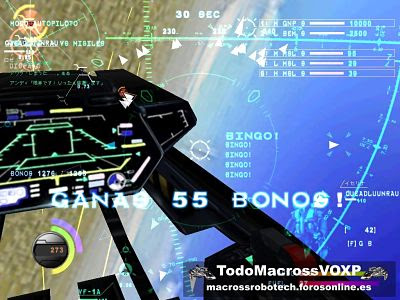Todo Macross Voxp
A testing an unusual asymmetric wing configuration, showing one wing swept forward, and one swept back A variable-sweep wing, colloquially known as a 'swing wing', is an, or set of wings, that may be swept back and then returned to its original position during flight. It allows the aircraft's shape to be modified in flight, and is therefore an example of a aircraft. Typically, a is more suitable for high speeds, while an unswept wing is suitable for lower speeds, allowing the aircraft to carry more fuel and/or payload, as well as improving field () performance. A variable-sweep wing allows a pilot to select the correct wing configuration for the plane's intended speed. The variable-sweep wing is most useful for those aircraft that are expected to function at both low and high speed, and for this reason it has been used primarily in. A number of successful and experimental designs were introduced from the 1940s into the 1970s; however, the recent advances in flight control technology and structural materials have allowed designers to closely tailor the and structure of aircraft, removing the need for variable sweep angle to achieve the required performance; instead, wings are given computer-controlled on both leading and trailing edges that increase or decrease the or of the wing automatically to adjust to the flight regime. This is another form of variable geometry, although it is not commonly called such.

On display at the,, United States. The 1931 IV was a design whose lightly swept wings could vary their sweep through a small angle during flight. This allowed longitudinal trim in the absence of a separate horizontal stabiliser. Later, experimental aircraft were built to study the effects of a simple swept wing. The first of these was the whose sweep angle could be changed on the ground. Before the P.1101 could be completed. [ ] Soon afterwards, the P.1101 was taken to the for study at, but because of missing documentation and structural damage, Bell decided against completing it.
Comunidad Macross Robotech. 3,173 likes 3 talking about this. Skull Team Fansub, Todo Macross VOXP, Convenciones Macross Eternal: Desarrollo de. Aug 17, 2010 This video is unavailable. Watch Queue Queue. Watch Queue Queue.
Instead, a close copy was constructed which featured wings that could adjust sweep angle in flight. One problem discovered while testing the was that as the wing pivoted rearward, the also moved to the rear, pushing the nose down. A system to compensate for this basic effect had to be added for any such design to be viable. [ ] Immediately after the war (1949) had started work on variable geometry to maximise the economy of supersonic flight. Initial work was on the military 'Wild Goose' project, then he went on to the ', intended to achieve a return flight from Europe to Australia in 10 hours.
Install 3proxy Centos more. It had a tailless design and he successfully tested several models including a six-foot at speeds of up to Mach 2 in the 1950s but government backing was withdrawn. Wallis and his team presented their work to the Americans seeking a grant to continue their studies but none was forthcoming. In March 1949, the aeronautical engineer AFRAeS designed and patented a supersonic variable-sweep wing fighter.
He lodged patent applications in Britain and subsequently in May 1956 was granted a US Patent (2,744,698) for 'High Speed Aircraft Wing and Tail Surfaces Having Variable Sweep-back'. In February 1951 he applied for another patent (granted as US 2,741,444 in April 1956) for a supersonic variable-sweep wing and tail fighter ['High Speed Aircraft Having Wings With Variable Sweepback']. The design was built and wind tunnel tests were completed successfully, but due to budget constraints at the time, the design failed to receive government backing. A variable-sweep wing was tried on the in 1952.
The XF10F never entered service; it possessed extremely poor flying characteristics and rather vicious spin tendencies. The idea was again revived in the early 1960s as a way to reconcile ever-growing aircraft weights (and thus ) with the need to provide reasonable and performance. The United States adopted this configuration for the TFX (Tactical Fighter Experimental) program, which emerged as the, the first production variable-sweep wing aircraft. A Similar requirements in the also led, the Soviet aerodynamics bureau, to explore the possibilities of variable geometry.
TsAGI evolved two distinct designs, differing mainly in the distance (expressed as a percentage of total ) between the wing pivots. A wider spacing not only reduced the negative aerodynamic effects of changing wing sweep, but also provided a larger fixed wing section which could be used for or stores.
This could, in fact, be adapted to more-or-less existing airframes, which the Soviets soon did, with the (based on the earlier ). The limitation of the wide spacing, however, was that it reduced the benefits of variable geometry as much as it reduced their technical difficulties. For the new, 'clean-sheet' Soviet designs, TsAGI devised a more narrowly spaced arrangement similar to that of the F-111. This design was used (albeit at different scales) for the fighter and the interdictor, which flew in prototype forms at the end of the 1960s, entering service in the early 1970s.